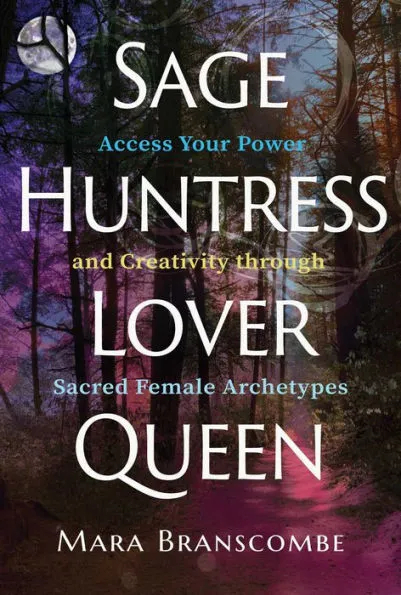The word “archetype” is used frequently in spiritual and psychologically oriented circles. It comes from the work of psychoanalytic theorist Carl Jung. Here, author Mara Branscombe defines archetypes as “human motifs of the individual experience and evolution: patterns or models of characteristics that are repeated throughout the universe.” Archetypes live within the collective unconscious and within our individual psyches, cross-culturally. Everyone knows what Mother and mothering is, or a Hero or a Mentor. The trick is: once knowing that archetypes exist, how does one access them and make them conscious?
This book is a useful workbook for women (and men) who want to dive deep into sacred feminine archetypes. “The archetypes,” Branscombe writes, “provide an open canvas that you can use to awaken intuition and understand how your mind works.”
Mara Branscombe is a yoga and meditation teacher who wrote an earlier book called Ritual as Remedy. This new book’s better, in my view, because it’s well organized, along the lines of seven archetypes: Maiden, Mother, Sage, Huntress, Mystic, Lover, and Queen. Branscombe gives a brief summary of each and then a full chapter. There's no need to read about the archetypes sequentially. For each one, she offers background through prose and poetry, followed by mindful and somatic exercises, journaling prompts, and guided visualizations.
I flipped first to the chapter “Sage Spirit” and found insightful material. Branscombe presents this archetype as not just about noble wisdom that might effortlessly arrive with age. She writes that “to connect with the inner Sage requires a deep listening within, along with conscious, present-moment awareness. We must be willing to understand how the inner critic may be ruling our lives.” This is the shadow side of the Sage archetype. If the Sage is worried about what others think, she “remains disconnected from her truth.” The Sage flows with change but not if she’s “caught in over-doing, over-judging, and under-acknowledging personal efforts.”
What to do about it? Branscombe offers a good practice: each morning, attend to your “personal frequency” and how it’s feeling in your body. Of course, this advice can be given with any of the archetypes. Branscombe’s point with this one is that “your inner Sage holds a frequency that his higher than the inner critic and steadier than the frantic multi-tasking martyr.” Wisdom comes with a practice of naming your “emotional debris.” It’s one of the journal prompts to reveal the Sage’s shadow: “What emotional debris is currently draining your energy?”
With the Huntress archetype, the shadow side can be seen in over-defensiveness. Healing for this includes witnessing “the way you battle your own internal dialogue.” The shadow side of the Lover is attachment to past wounds and previous relationships, believing there will never be enough love and that you’re unworthy of love. Working with forgiveness and embodied self-love are medicine here. The Queen archetype is a “powerful visionary” who embodies wholeness. She might suffer from perfectionism and over-production. Her medicine is to surrender attachments to outcomes. The Queen’s “finesse lies in discovering what you love, what lights you up, and how to formulate an action plan.” The Queen “is a wise woman who crafts, strategies, and organizes her passions and shares them unapologetically with the world.”
Here I’m just giving you a flavor of the many gems in this book. What I appreciate about it most is that it’s not another love-and-light type treatment of the divine feminine. It’s good psychology, made readable and applicable.
~review by: Sara R. Diamond
Author: Mara Branscombe
Findhorn Press, 2023
255 pages, $18.99

